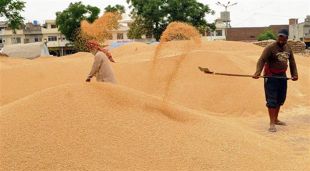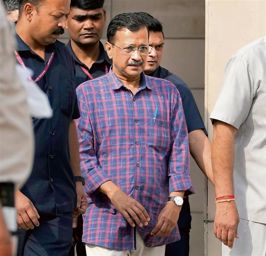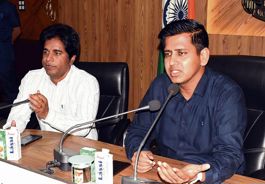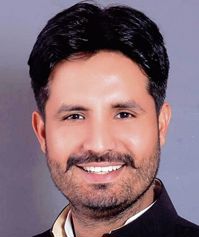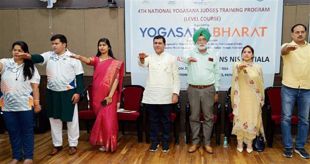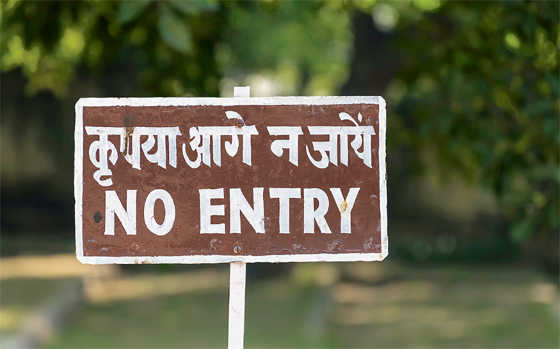
Most Indians are bilingual. istock
Deepti Gupta
Chairperson, Dept of English and
Cultural Studies, Panjab University
Language has always been an emotional minefield in most cultures and unfortunately much troubled too. Indian policymakers swing between the poles of mother tongue and foreign language in order to keep everyone busy and argumentative while merrily tapping vote bank. The scientific, linguistic facts about language paint a different picture. This picture of the human language ability asserts that human beings are meant to be multilingual. And, the benefits of using many languages with equal proficiency are multiple.
Ellen Bialystok is a neuroscientist at the Bayerest Health Sciences, Rotman Research Institute. She writes, “‘Executive function’ is a core set of cognitive skills, the CEO of the brain, it's the last cognitive area to mature in childhood and the first to go as we age.” How can we improve it and maintain it longer? The answer lies rooted in bilingualism. Adult bilinguals outperform monolinguals in multitasking. The constant practice of moving one language to the background while keeping another in the foreground helps the CEO remain busy and efficient.
A study done in 2010 showed that CT scans showed that monolinguals begin to present the symptoms of Alzheimer's much before bilinguals did. Tom Schweizer, the neuroscientist who led the study, reported that “Bilingualism exercises more networks; it branches out, recruiting other brain areas. So, if you're hit with a devastating disease like Alzheimer's, your brain compensates. It reassigns what's broken — like memory function — to another area.” Bilingualism has been seen to stave off the onset of Alzheimer's by about five years, says Schweizer and “that’s better than any available pharmaceutical option.”
Studies indicate that bilingualism helps people become critical thinkers. Caste, the bane of a society, is handled more objectively by bilinguals. Most people think that the circumstances of one's birth make people what they are but studies reveal that children exposed to two languages are more likely to feel that experiences make people what they are and not their birth. Bilingual kids are not essentialists, they think what matters is what one learns, not what one is born with. Bilingualism in the pre-school years can alter kids' beliefs about the world around them.
Krista Bayers, a professor of psychology from the Henlein Foundation, Canada, writes, "Our finding is that bilingualism reduces essential beliefs and raises the possibility that early second language could be used to promote the acceptance of human and social diversity. Monolinguals were more likely to think that everything is innate, while bilinguals were more likely to think that everything is learnt."
One usually thinks of bilingualism as a flat, mono-dimensional term, but it includes several shades of language use. Monolingualism refers to people who know and use one language. Simultaneous bilingualism is when a person uses two or more languages with equal proficiency at the same time. Sequential bilingualism refers to the learning and use of two or more than two languages by turns.
In an interesting experiment, neuroscientists could demonstrate that a duck raised by dogs began to bark and run.
At present, there are 7,100 languages in the world and nearly 2,600 are endangered. About India's problem, Devy feels, "We have not figured out how to deal with linguistic diversity. We thought creating states on linguistic lines was the end of it." Panchanan Mohanty, Coordinator of the Centre for Endangered Languages and Mother Tongue Studies, University of Hyderabad, feels that "…there is absolutely no language revitalisation effort in India." Nicholas Ostler, Chairman, Foundation for Endangered Languages, holds that language attitudes in a community are crucial to its sense of identity and linguistic pride. He quotes instances from the Beary community in Karnataka and the Kukna tribe of Gujarat who have preserved their native languages through intense communal efforts.
Farid Ahsan, co-founder of ShareChat, an app for non-English users that hosts more than 7.5 million posts a month, says, "When we started ShareChat, we opened it up to four languages. Although 90 per cent of the users were signing up for English, the engagement rate was low. But that for the 10 per cent choosing the regional languages was quite high. So we removed English fully in 2015. We are all bilingual in India; there is no Indian who speaks only English so we knew it was okay."
This multilingualism is precious. No language policy or curriculum can work if it does not respect this unique feature of India's people. All languages perform the function of communication and no language is good or bad. People should use languages without any value judgment or prejudice, cherishing their unique features. Many times, language proficiency is responsible for success and failure, joy and sorrow. So, there is no merit in complicating life with language problems.
India lost 220 languages since ’61
Asian countries enjoy the unique privilege of learning and using two and more than two languages. India, with its vast spectrum of languages is especially blessed. This also leads to the fact that India heads the count of endangered languages in the world. At the last count, India had 197 endangered languages. Arunachal is linguistically the most diverse state with 90 languages. India also has the world's second highest number of languages. Ganesh Devy, caretaker of the People's Linguistic Survey of India (2010-13), holds that India may have lost 220 languages since 1961 and may possibly lose another 150 in the next 50 years. Critically endangered languages are those whose youngest speakers are grandparents or older and use the language partially and infrequently."





















